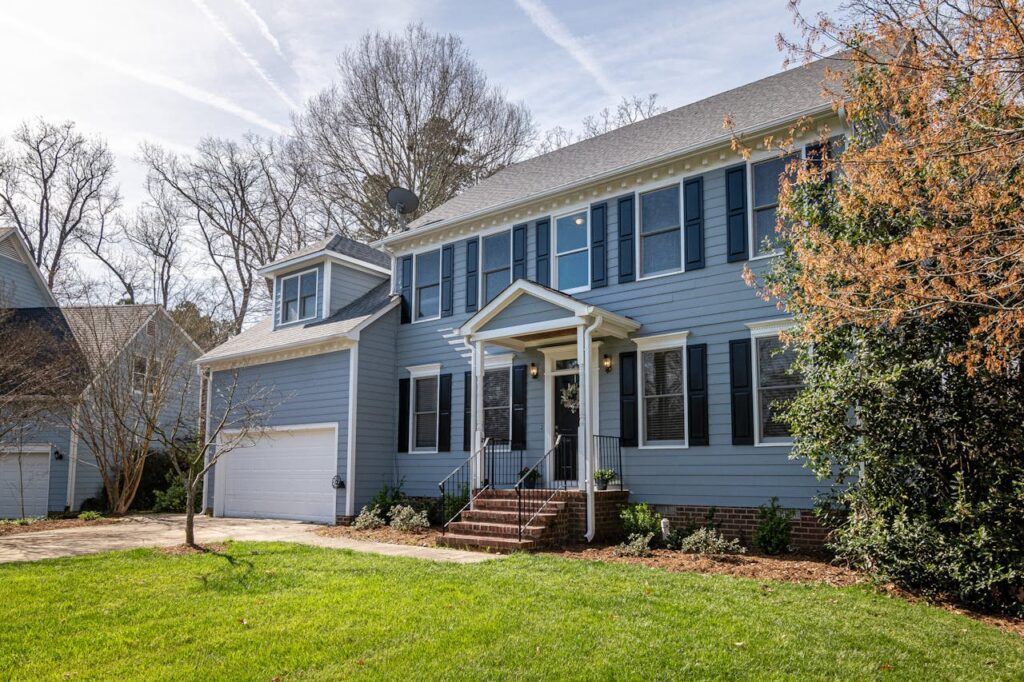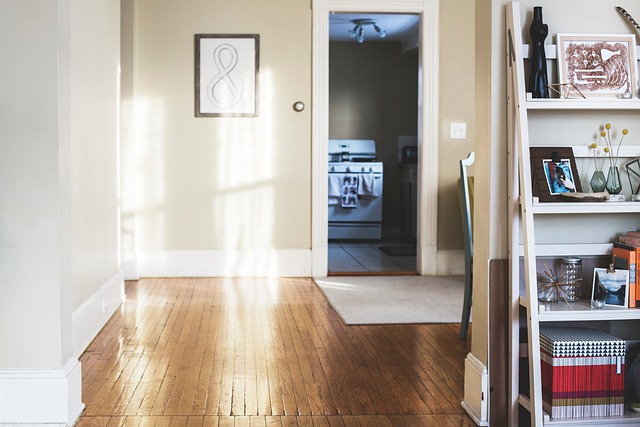Ensuring your framing project complies with building codes is crucial for safety and legal reasons. Understanding the intricate requirements can be overwhelming, but with the right guidance, you can navigate this process smoothly. Following specific building code guidelines and regulations can avoid costly mistakes and ensure your project meets all necessary standards. Building codes have evolved to enhance safety measures and construction quality, making it essential to stay updated on current regulations.
Understanding Building Codes
Definition
Building codes are regulations that establish standards for construction quality, safety, and sustainability in various types of buildings. They ensure structures meet specific criteria to safeguard occupants and the public.
Building codes cover a wide range of aspects, such as structural integrity, fire safety, energy efficiency, and accessibility. These regulations dictate the materials used, construction methods, and design elements to guarantee a safe and functional building.
Importance of Code Compliance
Staying informed about changes in building codes is crucial to compliance. Failure to adhere to updated regulations can result in costly fines, delays in project completion, or even legal consequences. By regularly checking for code revisions, builders can ensure their projects meet the latest standards.
The Purpose of Building Codes
Protecting Public Safety
Building codes play a crucial role in protecting public safety by ensuring that structures are constructed to withstand various stresses and loads. These codes establish minimum requirements for structural integrity, fire safety, and sanitation, safeguarding occupants from potential hazards.
Adhering to building codes helps minimize risks associated with natural disasters like earthquakes, hurricanes, and floods. By enforcing specific standards for construction materials and techniques, building codes enhance the resilience of buildings, reducing the likelihood of catastrophic damage during emergencies.
Ensuring Structural Integrity
One of the primary objectives of building codes is to ensure structural integrity in construction projects. These regulations dictate guidelines for foundations, framing, roofing, and other structural components, preventing failures that could compromise the stability of a building over time.
Pros:
- Enhances public safety
- Reduces risks during disasters
- Improves structural integrity
Cons:
- Initial compliance costs
- Potential limitations on design flexibility
Promoting Property Value and Insurance Coverage
Adhering to building codes can significantly impact property value by increasing the overall quality and safety of a structure. Properties constructed in compliance with building codes often command higher prices in the real estate market due to their enhanced safety features and reduced maintenance needs.
Moreover, insurance companies typically offer better coverage and lower premiums for properties built according to established building codes. Compliance demonstrates a commitment to safety and risk mitigation, making properties less susceptible to damage and liabilities.
Development and Enforcement of Codes
Codes Development
Building codes are essential code requirements that dictate the standards for construction, ensuring safety and quality. The process of developing these codes involves a collaboration of experts such as architects, engineers, and government officials. They work together to create national model codes that serve as the foundation for local regulations.
The standards development process is rigorous, considering factors like structural integrity, fire safety, and energy conservation. These codes are continuously updated to reflect advancements in engineering and technology. Municipalities adopt these codes, tailoring them to their specific needs through the development process.
Enforcement Mechanisms
Enforcing building codes is crucial to maintaining safety standards in construction. Inspections play a vital role in ensuring compliance with the fire code and other regulations. Inspectors examine assemblies and applications to verify that they meet the prescribed protection requirements.
Penalties for violations serve as deterrents against non-compliance. Individuals or entities failing to adhere to the urban interface code may face fines or even suspension of construction activities until corrections are made. This strict enforcement ensures that buildings are safe for occupants and neighboring properties.
Community Input and Local Regulations
Community input plays a significant role in shaping local building codes. Residents, businesses, and organizations provide valuable insights into the unique needs of their area. This feedback influences the energy code and other regulations, making them more reflective of the community’s priorities.
Local governments collaborate with stakeholders to create regulations that address specific challenges such as extreme weather conditions or environmental concerns. By involving the community in the regulations drafting process, authorities can implement codes that promote safety and sustainability.

Navigating the Permit Process
Obtaining Permits
To ensure your framing project meets building codes, the first step is obtaining the necessary permits. Permits are required to ensure that construction projects comply with safety standards and regulations set by local authorities.
It is essential to research the specific permit processes in your area, as they can vary depending on location. Contacting your local building department or visiting their website can provide you with a guide on the required steps for obtaining permits.
Required Documentation
When applying for permits, you will typically need to submit detailed plans and specifications for your framing project. These documents should outline the perimeter of the project, including dimensions, materials to be used, and structural details.
Common documentation required for permit applications includes:
- Architectural drawings showing different sections of the project
- Structural engineering plans detailing the capacity and strength of the structure
- Specifications outlining the individual components and materials to be used
Timely Submissions
Submitting your permit application early is crucial to avoid delays in project timelines. Delays in obtaining permits can significantly impact your construction schedule, leading to cost overruns and potential setbacks.
Researching Local Building Codes
Online Resources
When researching local building codes, homeowners can start by exploring online resources provided by their local government. These websites often offer comprehensive information on building regulations specific to different regions. By accessing these platforms, homeowners can gain valuable insights into the requirements they need to meet for their framing project.
Consulting Professionals
Another effective approach is to seek guidance from building officials or architects who are well-versed in local building codes. These professionals can provide expert advice on how to ensure that the framing project complies with all necessary regulations. By consulting with individuals familiar with the national fire code and fire regulations, homeowners can address any potential issues related to the use of combustible building materials.
Case Studies and Examples
Studying case studies of successful framing projects in the area can also be beneficial. By examining examples of new buildings or structures that have met local building codes, homeowners can gain practical insights into the best practices for ensuring compliance. Reviewing examples of homes that have been constructed using non-combustible materials can help homeowners make informed decisions about their own projects.
Importance of Compliance
Ensuring that a framing project meets building codes is crucial for maintaining the safety and integrity of a home. Failure to comply with regulations can result in costly fines, delays in construction, or even the need to rebuild structures that do not meet standards. By prioritizing compliance with local codes, homeowners can protect their investments and create a safe living environment for their families.
Communicating with Code Officials
Establishing Rapport
Building a strong relationship with code officials is crucial for ensuring your framing project meets building codes. By contacting these professionals early on, you can gain valuable insights into the specific requirements of your municipality. This proactive approach can help prevent potential issues down the line.
It is advisable to schedule meetings or consultations with code officials to discuss your project in detail. During these interactions, you can seek clarification on any issues or uncertainties related to building codes. By openly communicating and seeking guidance, you demonstrate a commitment to compliance and performance.
Documenting Communications
To maintain transparency and accountability, it is essential to document all interactions with code officials. Keep detailed records of any information provided by officials, as well as any documents or data shared during meetings or discussions. These records can serve as valuable references in case of future inquiries or disputes.
Creating a log of all communications, including emails, phone calls, and in-person meetings, can help track the progress of your project approvals. By maintaining thorough documentation, you ensure that all decisions are based on accurate information and clear transmission of requirements.
Seeking Support
In some cases, code officials may require additional testing or verification to ensure your project complies with building codes. It is important to be receptive to these requests and work collaboratively with officials to address any concerns. Seeking professional assistance for specialized testing can streamline the approval process and enhance the credibility of your project.
Engaging with code officials in a collaborative manner demonstrates your commitment to upholding safety standards and regulatory compliance. By proactively addressing any potential impact on the surrounding urban interface, you contribute to the overall well-being of the community.
Proactive Planning for Compliance
Checklist Creation
Integrating compliance into the initial planning stages is crucial to ensure your framing project meets building codes. Begin by creating a detailed checklist of code requirements that need to be followed throughout the project timeline. This proactive approach helps in identifying potential issues early on.
Regular reviews of plans and materials against local codes are essential to prevent last-minute changes. By incorporating this practice, you can address any deviations promptly, ensuring that your project stays on track with regulatory guidelines. This proactive measure also demonstrates a sense of responsibility toward prevention.
Expertise Utilization
Utilizing the expertise of code officials can provide valuable insights into specific provisions and solutions that align with building codes. Seeking their advice at the initial stages of the project can help in understanding the nuances of compliance requirements. Their recommendations can guide you in making informed decisions throughout the construction process.
Engaging with code officials not only enhances your understanding of compliance, but it also fosters a collaborative approach toward meeting building codes. Their expertise serves as a valuable resource in navigating the intricate components of regulatory guidelines. By leveraging their knowledge, you can streamline the compliance process effectively.
Continuous Monitoring
Continuous monitoring of compliance practices is essential to ensure that your framing project adheres to building codes. Implementing regular checks and balances within your project timeline helps in identifying any deviations promptly. This proactive measure allows for timely reaction to any discrepancies, preventing costly delays or rework in the future.
Ensuring Compliance During Construction
Quality Control
Implementing quality control measures is crucial to ensure ongoing compliance throughout the construction process. By conducting regular inspections and audits, contractors can identify any deviations from the building codes early on. This proactive approach helps in addressing issues promptly, minimizing the risk of non-compliance.
Appointing Oversight
Appointing a dedicated project manager or compliance officer can significantly contribute to maintaining code compliance during construction. This individual should have a strong understanding of construction regulations and be responsible for overseeing all activities to ensure they align with the required standards. Their role involves monitoring the work progress, verifying materials used, and coordinating with subcontractors to guarantee adherence to safety protocols.
Immediate Issue Resolution
Addressing any issues or discrepancies immediately is essential to avoid complications that may arise later in the project. Contractors must prioritize resolving non-compliance issues as soon as they are identified to prevent delays and additional costs. Regular communication among all parties involved, including subcontractors and suppliers, is key to swiftly rectifying any compliance violations.
Importance of Regular Inspections
Scheduling Inspections
Inspections by inspectors are crucial at every stage of a framing project to ensure compliance with building codes. Regular inspections help in identifying any deviations early on, preventing costly rework later.
Maintaining a schedule for inspections throughout the construction process is essential to catch any issues promptly. By having inspections done at key points, such as after framing and before drywall installation, you can address any non-compliance swiftly.
Early Problem Identification
One of the primary benefits of regular inspections is the early identification of potential problems. A keen eye during inspections can spot issues like inadequate fire prevention measures or structural hazards that could pose risks later on.
Identifying these problems early not only ensures fire safety but also helps in addressing them promptly, saving both time and costs in the long run. By catching issues during renovations early, you can avoid major setbacks and ensure the project stays on track.
Record-Keeping for Compliance
Maintaining detailed records of all inspections, their results, and any corrective actions taken is essential for demonstrating compliance with building codes. These records serve as proof that the necessary steps were taken to meet regulatory requirements.
In case of any questions or concerns raised by inspectors, having a comprehensive record of inspections and corrective actions can help provide an overview of the diligence exercised during the construction process.
Closing Thoughts
In ensuring your framing project meets building codes, understanding the regulations, communicating effectively with code officials, and staying proactive during construction is vital. Remember, compliance is key to a successful project. Regular inspections guarantee that your work aligns with the necessary standards. By following these steps diligently, you can navigate the complexities of building codes with confidence and ease. Your commitment to compliance not only ensures your project’s safety but also saves you from costly violations and delays. Stay informed, stay proactive, and stay compliant for a smooth and successful framing project.
Remember, building codes are in place to protect everyone involved. By adhering to them, you are not only meeting legal requirements but also prioritizing safety and quality in your construction endeavors. Keep these guidelines in mind, and your framing project will not only meet but exceed building code standards. Stay diligent, stay informed, and build with confidence knowing you’ve done everything by the book.
Elevate Your Home with Red White & Blue Construction!
Thinking about framing solutions for your house? Look no further! Embark on a transformative journey where your home in Lafayette, CA, becomes the sanctuary you’ve always dreamed of. With Red White & Blue Construction, every wall and corner is meticulously framed to ensure your house is as structurally sound as it is beautiful. Dive into advanced framing techniques that provide the perfect foundation for your home, or explore innovative designs that maximize space and enhance functionality. Our reputation in the Bay Area stands as a testament to our commitment, expertise, and the unparalleled standards we uphold. We’re more than just licensed contractors; we’re the architects of your dream home. With our transparent pricing and exceptional client engagement, you’re not just building; you’re reimagining, redefining, and revitalizing your space. Choose Red White & Blue Construction. Craft the next chapter of your home story. Frame Your Home with Excellence and reach out to us today!
Disclaimer
The materials available on this website are for informational and entertainment purposes only and not to provide advice. You should obtain advice concerning any particular issue or problem from a professional. You should not act or refrain from acting based on any content included in this site without seeking legal or other professional advice. The information presented on this website may not reflect the most current building developments. No action should be taken in reliance on the information on this website. We disclaim all liability concerning actions taken or not taken based on any or all of the contents of this site to the fullest extent permitted by law.





